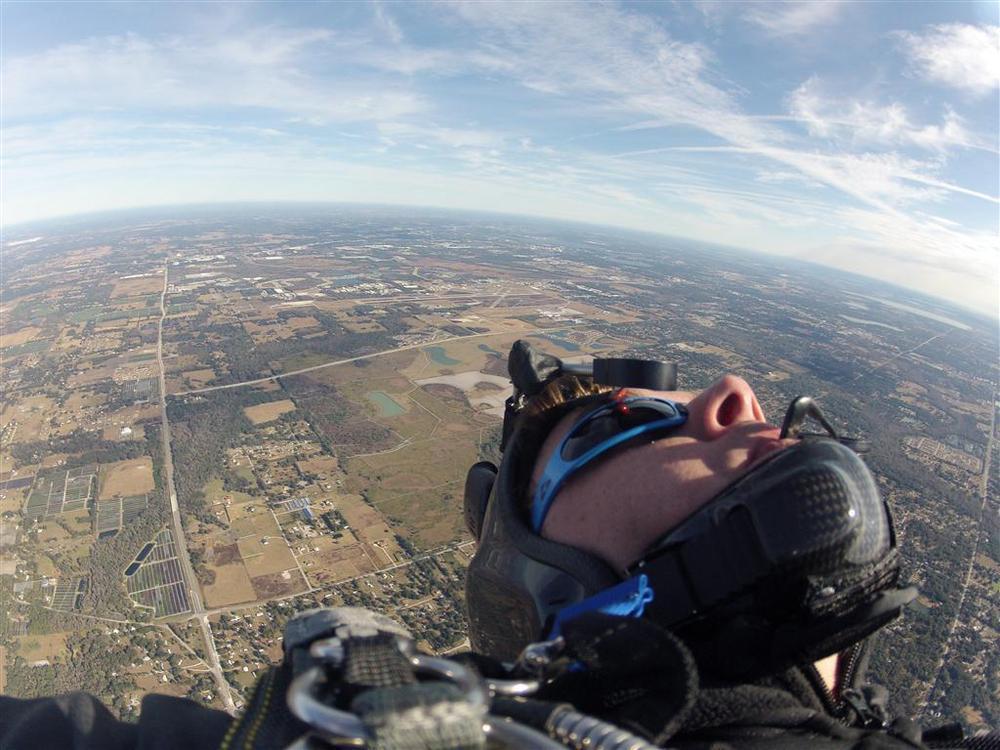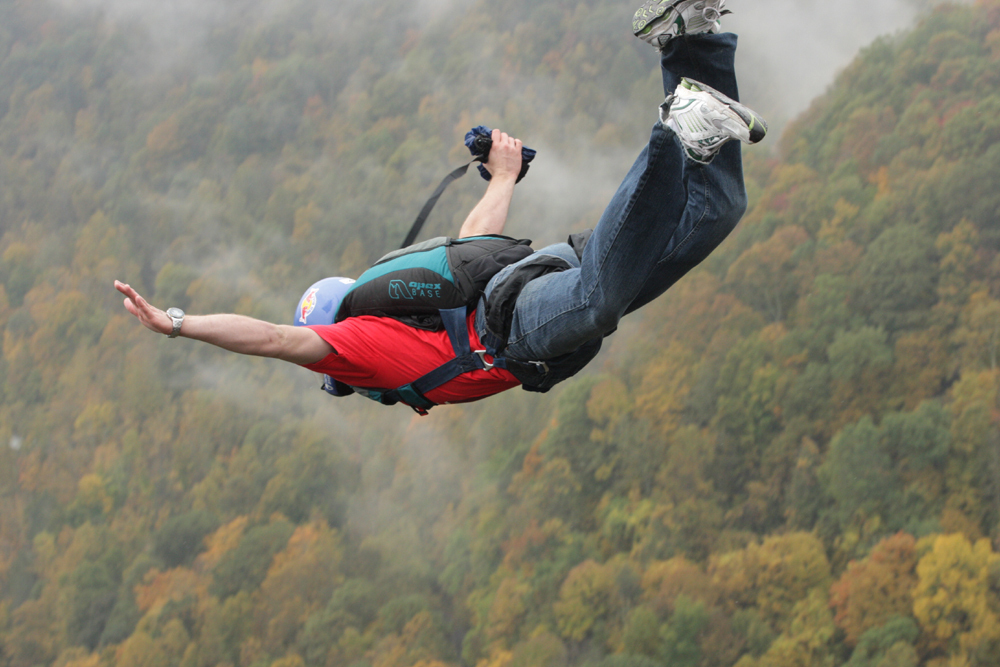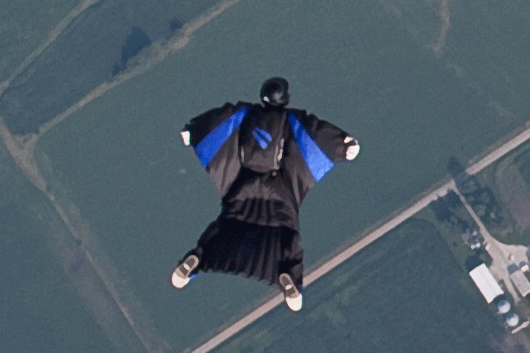Recommended Posts
chuckakers 426
QuoteQuoteThe safest option would be to not screw with the manufacturer's TSO by hiding the handles.
Yes....I agree...
But.........
Let's assume (just for the sake of discussion) for a moment that people are going to fly these suits with skydiving gear, would this not be safer than having the modded handles?
(edited to sound less "snarky")
You keep using the word "safer". If option 1 is not safe and option 2 is also not safe, there is no "safer" option.
You know, if this discussion was in the "incidents" forum people would be calling the jumper an idiot for jumping using either option.
D-10855
Houston, TX
QuoteMy understanding (possibly a misunderstanding) after speaking with several PIA manufacturers, is anything that hinders or modifies the container and release systems from "manufacturer-defined means of operation" is a violation of the TSO. Perhaps Bill Booth or John Sherman can kick in on this one.
There are manufacturers who specifically said they could not be held responsible in the event of one of these systems failing; it is a use of their equipment in a method other than as designed.
This does not make sense to me. The TSO certifies the equipment. Anything that modifies the equipment could certainly violate the TSO. The two parts of the TSO cover performance standards of the system and production approval.
Maybe it is a semantic argument but I don't see "proper use" as covered by the TSO.
AC 105-2D
13. PARACHUTE EQUIPMENT RULES.
h. Extra Equipment. The FAA does not consider the attachment of an instrument panel, knife sheath, or other material to the exterior of the parachute assembly an alteration. If attaching any extra equipment, take care not to impair the functional design of the system.
While it may not technically be a violation of a TSO the FAA will take a dim view of the practice. Plus it is just plain stupid to put yourself in that position.
Does anyone know the reason behind putting your handles inside of the suit?
Sparky
QuoteI think Douglas may be referring to this.
AC 105-2D
13. PARACHUTE EQUIPMENT RULES.
h. Extra Equipment. The FAA does not consider the attachment of an instrument panel, knife sheath, or other material to the exterior of the parachute assembly an alteration. If attaching any extra equipment, take care not to impair the functional design of the system.
While it may not technically be a violation of a TSO the FAA will take a dim view of the practice. Plus it is just plain stupid to put yourself in that position.
Does anyone know the reason behind putting your handles inside of the suit?
Sparky
Thanks for the reference, Sparky. I agree that it is a stupid practice.
QuoteI think Douglas may be referring to this.
AC 105-2D
13. PARACHUTE EQUIPMENT RULES.
h. Extra Equipment. The FAA does not consider the attachment of an instrument panel, knife sheath, or other material to the exterior of the parachute assembly an alteration. If attaching any extra equipment, take care not to impair the functional design of the system.
While it may not technically be a violation of a TSO the FAA will take a dim view of the practice. Plus it is just plain stupid to put yourself in that position.
Does anyone know the reason behind putting your handles inside of the suit?
Sparky
The suit was designed for BASE, not for skydiving. No need for handles on a BASE rig.
It's pretty stupid to do but there's always 'that guy'.
DPH -7, TDS 578, Muff 5153, SCR 14890
I'm an asshole, and I approve this message
QuoteThe suit was designed for BASE, not for skydiving. No need for handles on a BASE rig.
Thanks that never occurred to me....duh.
Sparky
Quote
You keep using the word "safer". If option 1 is not safe and option 2 is also not safe, there is no "safer" option.
So by that logic a BB Gun and a Thermonuclear warhead would be equally safe, no?
Again I am not saying that it is a good idea, I was saying that if the decision was already made to fly the suit (not arguing the merits of that) - what would be the best way to go about utilizing the suit with skydiving gear....
chuckakers 426
QuoteQuote
You keep using the word "safer". If option 1 is not safe and option 2 is also not safe, there is no "safer" option.
So by that logic a BB Gun and a Thermonuclear warhead would be equally safe, no?Quote
You either didn't understand my statement or you are attempting to twist my words. I didn't say either option was "equally safe". I said there was no "safer option". Your question requires one to decide whether one choice (BB gun) is safer than the other (warhead) while my point was that NEITHER (suit handle mod vs unzipping the suit) is safe.
Again I am not saying that it is a good idea, I was saying that if the decision was already made to fly the suit (not arguing the merits of that) - what would be the best way to go about utilizing the suit with skydiving gear....Quote
We have already established that answer. Given the options offered, there is no "best way" to utilize the suit with skydiving gear. You have already admitted that jumping the suit utilizing either option is a bad idea, so trying to argue which option is "best" makes no sense.
You might as well be asking if a person wants to jump a parachute that isn't airworthy, would it be safer to use the red one or the blue one?Chuck Akers
D-10855
Houston, TX
chuckakers 426
QuoteI think Douglas may be referring to this.
AC 105-2D
13. PARACHUTE EQUIPMENT RULES.
h. Extra Equipment. The FAA does not consider the attachment of an instrument panel, knife sheath, or other material to the exterior of the parachute assembly an alteration. If attaching any extra equipment, take care not to impair the functional design of the system.
While it may not technically be a violation of a TSO the FAA will take a dim view of the practice. Plus it is just plain stupid to put yourself in that position.
Does anyone know the reason behind putting your handles inside of the suit?
Sparky
The mod being discussed goes well beyond "attaching" something to the "exterior of the parachute assembly". It fundamentally changes the operation of the emergency handles, which sounds like a "functional design alteration" to me.
D-10855
Houston, TX
obelixtim 150
QuoteQuoteI think Douglas may be referring to this.
AC 105-2D
13. PARACHUTE EQUIPMENT RULES.
h. Extra Equipment. The FAA does not consider the attachment of an instrument panel, knife sheath, or other material to the exterior of the parachute assembly an alteration. If attaching any extra equipment, take care not to impair the functional design of the system.
While it may not technically be a violation of a TSO the FAA will take a dim view of the practice. Plus it is just plain stupid to put yourself in that position.
Does anyone know the reason behind putting your handles inside of the suit?
Sparky
The suit was designed for BASE, not for skydiving. No need for handles on a BASE rig.
It's pretty stupid to do but there's always 'that guy'.
Angling for a Darwin award no doubt. If he bounced, would the pilot not cop some flak for allowing someone on the plane with modified gear, who is not carrying out a test jump.
billvon 3,065
>there is no "safer" option.
I think there is, but you can have a safer option even if neither one is safe. (i.e. it's safer for the pilot to drink only 8 beers instead of 10 before flying; but still neither is OK.)
I think it's an important distinction to make because there WAS a way to do this that was safe enough; they just didn't choose that method of doing it. It was not "safe" but to most skydivers it was safe enough.
Quote
The mod being discussed goes well beyond "attaching" something to the "exterior of the parachute assembly". It fundamentally changes the operation of the emergency handles, which sounds like a "functional design alteration" to me.
My understanding (which could well be wrong) is that the wingsuit covers the hangles. It is not attached to them at all and doesn't fundamentally alter the original piece of TSO'ed equipment. It does prevent its intended operation and is stupid, but since it does not alter the original eqiupment, I still fail to see how it could void the TSO?
chuckakers 426
Quote>You keep using the word "safer". If option 1 is not safe and option 2 is also not safe,
>there is no "safer" option.
I think there is, but you can have a safer option even if neither one is safe. (i.e. it's safer for the pilot to drink only 8 beers instead of 10 before flying; but still neither is OK.)
I think it's an important distinction to make because there WAS a way to do this that was safe enough; they just didn't choose that method of doing it. It was not "safe" but to most skydivers it was safe enough.
Guess it depends on what you consider "safe enough".
D-10855
Houston, TX
Arvoitus 1
QuoteQuoteQuoteI think Douglas may be referring to this.
AC 105-2D
13. PARACHUTE EQUIPMENT RULES.
h. Extra Equipment. The FAA does not consider the attachment of an instrument panel, knife sheath, or other material to the exterior of the parachute assembly an alteration. If attaching any extra equipment, take care not to impair the functional design of the system.
While it may not technically be a violation of a TSO the FAA will take a dim view of the practice. Plus it is just plain stupid to put yourself in that position.
Does anyone know the reason behind putting your handles inside of the suit?
Sparky
The suit was designed for BASE, not for skydiving. No need for handles on a BASE rig.
It's pretty stupid to do but there's always 'that guy'.
Angling for a Darwin award no doubt. If he bounced, would the pilot not cop some flak for allowing someone on the plane with modified gear, who is not carrying out a test jump.
Modified how? He made the use of his skyrig harder then the manufacturer intended but as far as I can tell there is no modification to the skyrig.
pms07 3
Quote
Does anyone know the reason behind putting your handles inside of the suit?
Lack of good judgement?
QuoteMy understanding (which could well be wrong) is that the wingsuit covers the hangles. It is not attached to them at all and doesn't fundamentally alter the original piece of TSO'ed equipment
That's not what it looks like to me. Watch DSE's demo video, and you'll see that there are loop handles mounted to the outside of the suit with a lanyard that threads through the zipper pocket and then attaches to the cutaway or reserve ripcord cable with a rapide link.
The idea is that pulling the loop handle will in-turn pull on the cutaway/ripcord cable, and enact the cutaway and reserve ripcord pull. In my opinion, that alters the operation of the rig.
The design of the rig provides for the jumper being able to remove the handles from the MLW, and pull with leverage in the opposite direction of the cables allowing for the easiet possible extraction.
Consider a rig where the reserve activation involved pulling a soft loop attached to a cable, and the only direciton of force you could apply would be perpendicular to the direction of the cable, forcing the jumper to pull the cable sideways to enact a reserve deployment. Do you think such a design would pass a TSO test?
The video clearly shows pull forces in excess of 50lbs, which is way over the standard currently used in skydiving. The suit alters the basic function of the rig such that it's well outside the standard. and no longer functional.
QuoteQuoteMy understanding (which could well be wrong) is that the wingsuit covers the hangles. It is not attached to them at all and doesn't fundamentally alter the original piece of TSO'ed equipment
That's not what it looks like to me. Watch DSE's demo video, and you'll see that there are loop handles mounted to the outside of the suit with a lanyard that threads through the zipper pocket and then attaches to the cutaway or reserve ripcord cable with a rapide link.
The idea is that pulling the loop handle will in-turn pull on the cutaway/ripcord cable, and enact the cutaway and reserve ripcord pull. In my opinion, that alters the operation of the rig.
The design of the rig provides for the jumper being able to remove the handles from the MLW, and pull with leverage in the opposite direction of the cables allowing for the easiet possible extraction.
Consider a rig where the reserve activation involved pulling a soft loop attached to a cable, and the only direciton of force you could apply would be perpendicular to the direction of the cable, forcing the jumper to pull the cable sideways to enact a reserve deployment. Do you think such a design would pass a TSO test?
The video clearly shows pull forces in excess of 50lbs, which is way over the standard currently used in skydiving. The suit alters the basic function of the rig such that it's well outside the standard. and no longer functional.
I was not talking about the mod with the loop handles. That i would much more readily concede could be interpreted as a modification to the rig (although even that could be debatable). I was talking about the video in the original post, where the handles are zippered up inside of the suit. Doesn't alter the rig in any way, as far as I can see. That, to me, may be stupid but I don't think it changes the TSO on the rig.
QuoteConsider a rig where the reserve activation involved pulling a soft loop attached to a cable, and the only direciton of force you could apply would be perpendicular to the direction of the cable, forcing the jumper to pull the cable sideways to enact a reserve deployment. Do you think such a design would pass a TSO test?
That is exactly what is required to pass TSO performance tests but it can't exceed 22 lbf.
Sparky
SAE AS8015 Revision B
4.3.2.4 Primary Actuation Device/Ripcord, Actuation Force Tests: A load at the ripcord handle, or equivalent, of not less than 5 lbf (22.2 N), applied in the direction giving the lowest pull force, nor more than 22 lbf (97.9 N), applied in the direction giving the highest pull force under normal design operations, shall result in a positive and quick deployment initiation on all tests. A minimum of 10 pull tests is required. For chest type parachute assemblies, the maximum pull force shall be 15 lbf (66.7 N).
4.3.2.5 Main Canopy Release, Actuation Force Tests: While in a suspended harness (with additional ballast as required to equal twice the maximum operating weight), a force at the main canopy release handle, or equivalent (if used), of not less than 5 lbf (22.2 N) (applied in the direction requiring the least force), nor more than 22 lbf (97.9 N) (applied in the direction requiring the greatest force under normal design operations), shall result in a positive and quick release of the main canopy on all tests. A minimum of 12 pull tests is required.
piisfish 140
reducing the drag to compensate for the extra Go-pro'sQuoteQuote
Does anyone know the reason behind putting your handles inside of the suit?
Lack of good judgement?







.thumb.jpg.4bb795e2eaf21b8b300039a5e1ec7f92.jpg)


There are manufacturers who specifically said they could not be held responsible in the event of one of these systems failing; it is a use of their equipment in a method other than as designed.
Share this post
Link to post
Share on other sites